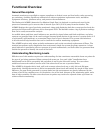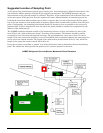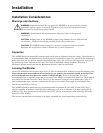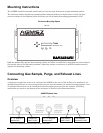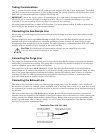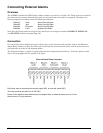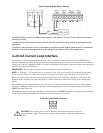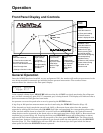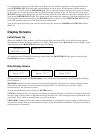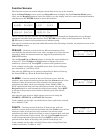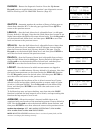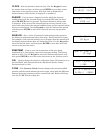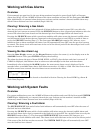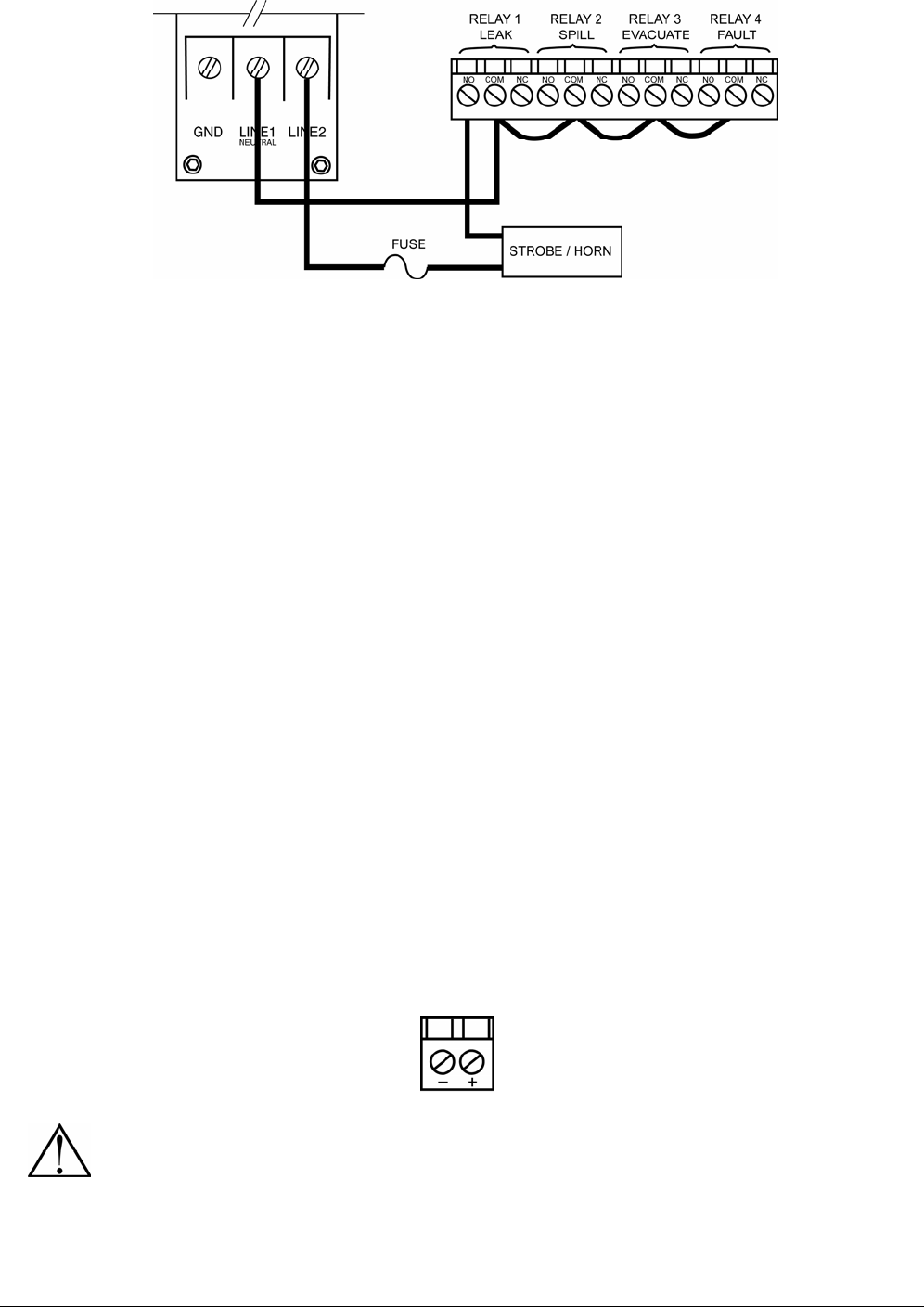
Instruction 3015-4286 11
Typical External Alarm Relay 1 Wiring
Jumper the ‘Neutral’ line of an external power source or the monitor’s AC input to the ‘Common’ terminals on
the relay connector.
Connect one end of the strobe or horn to the ‘NO’ terminal of whichever level of alarm is appropriate for the
application.
The other end of the strobe or horn is connected to the other leg of the external power source. For protection,
install an in-line fuse of the appropriate size and design for the external alarm device being used.
4–20 mA Current Loop Interface
An external 4–20 mA monitoring device (e.g., chart recorder) can be connected to the AGMSZ using a
shielded-twisted-pair cable. Use any of the service knockouts to gain access to the interior of the monitor.
Locate the 4−20 mA Connector (Page
8), remove it from the circuit board, and then remove the resistor or
shorting wire from its terminals.
IMPORTANT! The monitoring device must be isolated from ground (floating).
NOTE: A 100 ohm, ¼ W resistor must be connected to the 4–20 mA connector if no external monitoring
device is used. Failure to install this resistor may cause a loop fault code <0010> to occur (Page 19).
Secure the wire leads from the external monitoring device to the 4–20 mA connector as shown in the
diagram below, making sure that the polarity at this connector matches the wiring at the monitoring
device.
The default current-to-ppm factor is set to 0.016 mA = 1 ppm, providing a measurement range 0 ppm
(4 mA) to 1,000 ppm (20 mA). Note that the current-to-ppm factor can be changed using the monitor’s
LOOP function (Page
16).
To facilitate loop zero and span checking, note that when the LOOP function is selected the loop output is
set to 20 mA, and upon exiting this function the loop output is set to 4 mA.
4–20 mA Current Loop Connector
CAUTION: Never apply power to the 4–20 mA Current Loop Connector from an
external power supply. Connect only a load resistor and/or a floating measurement
device.



